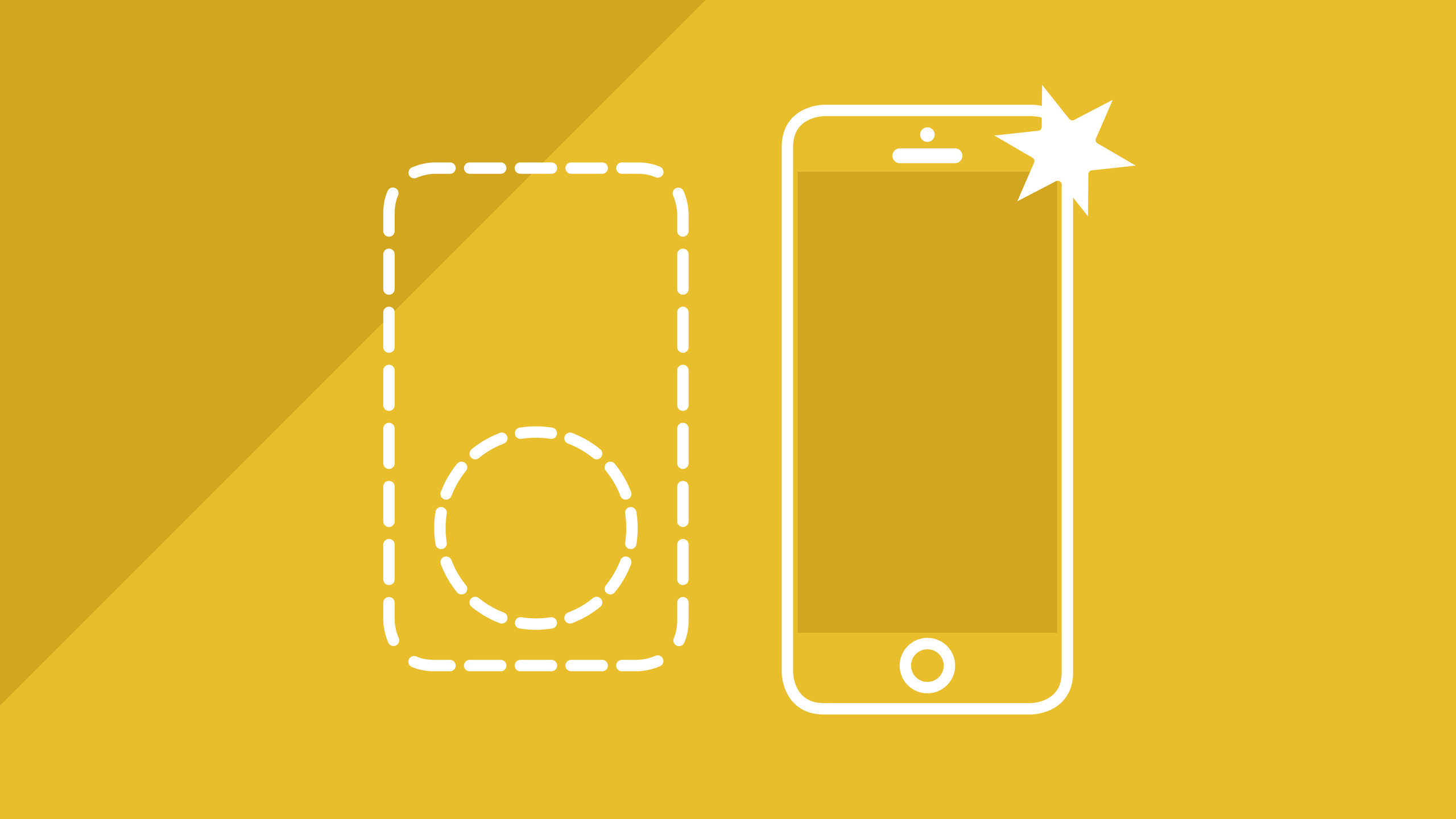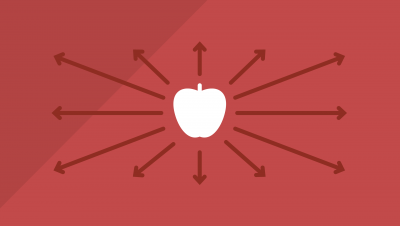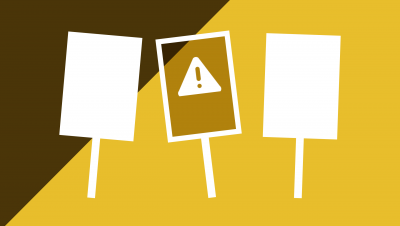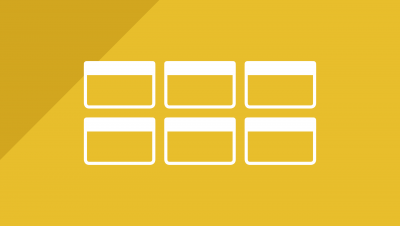I love my iPod. This little gizmo has been a part of my life since 2004. We’ve been through a lot together — international trips, crummy jobs, supermarket lines, hurricanes — and for most of that time we’ve been attached at the hip. (Not even kidding, most of my pants are worn out in the front-right pocket where I keep an iPod.)
But is it time to move on?
I’m a stalwart. Most people abandoned their iPods within 6 months of purchasing their first smart phone, especially if that was an iPhone in particular. The music player-cum-internet device is all that most people needed. I’ve never been one of these people, until recently.
Mostly Podcasts, Also Music
Listening habits are, of course, a large part of this. While I do have a vast music library of obscure jazz and classic rock, I’m mostly a podcast listener. I grab a daily stack of new shows and listen for hours. 8-12 hours a day is not uncommon, especially when working full-time hours with two commutes attached. Headphones on, podcasts pumping, zoned in.
This, for a long time, meant that my iPod wasn’t going anywhere. Phones were terrible at podcasts for several reasons including storage, battery life, and interfaces, to name a few.
Podcasts are getting better on phones, and I’m moving that way as well. This sounds strange for me to say, but in the end it makes sense.
Things are Breaking
Aside from smartphone adoption, the biggest reason people cited as moving away from their iPod was simply that the damn things break! Nothing lasts forever, and even after 5+ years, a device you use daily will start to fall apart. With Apple discontinuing its iPod [Classic] in 2014, iPods numbers in the wild started to decline, and would fast become an endangered species.
In my case too, I felt the burder of broken stuff. In 2014 — as I was jetting off to the first Podcast Movement, no less — the headphone jack of my iPod started to die. By the time I returned it was toast, only playing through the right ear. (Yes, I tried other headphones, docks, etc. This was a scientific conclusion.)
This, for me, made the thing unusable outside of a dock with a built-in speaker. I managed to scratch together enough money to buy the final iPod, which is still serving active duty today. But when this one goes, I have no earthly idea how to replace it!
iTunes: Still broken after all these years
iTunes is at least 15 years old and it’s not getting any better. With every new “feature” they add, ordinary syncing becomes a lower and lower priority. You could argue that the iPod+iTunes workflow was important to Apple in years past, but with Apps, Music, TV & Movies, and all the other garbage, it simply isn’t being worked on and improved.
In my case, this made an already-convoluted workflow that much more ridiculous. As a very eccentric podcast listener, not only did I hit that Refresh button first thing in the morning to get the latest podcasts, but I would then convert them all to Audiobooks and number them according to the order in which I would listen. Then I would sync the new items to iPod, careful to remove the old ones first for fear of getting the playlist all jumbled up.
The above workflow is ripe with workarounds. There’s no keyboard shortcut to Refresh Podcasts in iTunes, meaning you have to click the actual button. (For various reasons, I don’t like to have it download automatically.) Converting to Audiobook is done solely to take advantage of the speed playback settings on the iPod. There’s no way to listen to Podcasts at an altered rate on the iPod (or in iTunes), but there is for Audiobooks! A click-and-hold of the main button will bring up the playback settings, with “Faster” being my preferred speed setting for spoken word content like news and comedy. The whole numbering thing is a way to prioritise certain shows to the top of the list and others to the bottom. It’s manual as heck, but the only way to create any sort of playlist function for Audiobooks. Otherwise they’ll just be listed in alpha order, and due to the wacky and haphazard naming schemes of most podcasts, this simply isn’t reasonable. To make matters worse, a few versions ago Apple changed how they sort music and other content in iTunes so that any track beginning with a number heads to the bottom of the list, rather than the top. That last bit about removing old tracks was again to replace a better playlist management option; it’s frustrating to hit “next” on your iPod only to be greeted with something you already heard, instead of the new item waiting for you back at home.
What Happened to my Elevation Dock?
A few years back, a small outfit in Portland, Ore. had the idea for a better iPod (and iPhone) dock. Elevation Dock was successfully launched on Kickstarter, and I believe it was a record-breaking project at the time, earning more than $1.4 million in pledged orders. Eventually the dock did arrive, and it worked as designed! A sturdy, handsome block of Aluminum with an iPod 30-pin adapter in the middle. Boom.
For whatever reason, the Elevation Dock doesn’t work great any more. Could be my Hackintosh doesn’t play nice with older USB specs. Could be that iTunes isn’t as robust as it once was with newer versions of macOS. Could even be the crummy electricity in my building distrupts a clean DC current between all the devices! (My lights flicker when you turn on a switch in the other room. Ah, the joys of an old building.)
This means syncing, already an annoying process, is now unreliable. I had to dig up an old 30-pin USB cable and plug ‘er up every morning! How the hell was this ever a thing?! The cable itself has started to frey, but unlike 2006, I don’t have a bunch of them spare around the house for charging or syncing.
I also had a simple iPod dock with speaker that I used while listening in the kitchen. That broke too, no longer offering volume control but instead being stuck on “max.” At that volume, the sound is distorted and all but unlistenable.
I hate when things break and I can’t repair them. After 10+ years, this iPod life is starting to get serious.
Finally, an iPhone
These above problems with hardware, software, syncing, interfaces, and the workflows that tie them all together meant that I was finally looking at my iPhone to be a modern saviour and replacement for my iPod. It took a while!
Essentially, there were three things that did the trick:
- A viable app for managing and playing Podcasts
- A great pair or wireless commuting headphones
- A second pair of wireless headphones for the gym
Downcast
Apple’s own Podcasts app is crap. Version 1 had a silly reel-to-reel player interface and was so convoluted that most people simply refused to explore its use on a daily basis. Version 2 is better, but still requires a lot of extra clicking just to download the latest episodes from a given show, and to play them back. Like Apple Music, the Podcasts app has a fundamental interface problem in determining which episodes are on your phone, ready to be played that instant, and which are somewhere in the cloud, available for streaming, downloading, etc. I’d been caught out several times thinking a given show or song was on my phone, only to discover that an internet connection was suddenly needed. As a New Yorker who spends half his life underground in metal tubes with no wi-fi, this is beyond frustrating.
But then I found Downcast.
I first used Downcast back in 2013 after hearing about it on Comedy Film Nerds. But this was a time when I was still going strong with my iPod. Nothing at the time was so magical that it forced me to switch. In fact, it was glitchy and frustrating, just like Apple’s own attempt.
Lately, though it’s improved to the point of, well, working! I can manage daily downloads, sort them into a playlist, and listen to one after another without having to sync to a computer or pull my hair out in frustration. Imagine that!
There is one helper app that made Downcast more viable for me, and that’s Feed Informer. Essentially, Feed Informer lets you create mega-feeds of all your podcasts. This way, you only have to subscribe to four or five “Digests” instead of the forty- or fifty-odd individual shows you might like. After all, not every title releases a daily show … but you still want to stay subscribed!
Downcast isn’t great for discovering and subscribing to new shows, but since I only had a few Digests to track, I muddled through some manual copy-pasting on the iPhone and got my RSS feedds where they need to be. I can now refresh dozens of shows at the swipe of a finger. This, I admit, is lightyears ahead of the old iPod workflow.
Bose
I’ve been a fan of “big” headphones for over a decade. In NYC, you need ’em as much for ear protection as for audio enjoyment. My first pair of active noise-cancelling headphones were from Audio-Technica back in 2007. When those bit the dust I bought another pair of ATs which lasted a good few years (with some replacement parts along the way). About a year ago, I finally bucked up for a pair of Bose QC25s, which The Wirecutter rated the best noise-cancelling headphones of their kind.
The QC25s were solid. Although they are light in stature, they’re durable. Sound is top notch, as is the ability to filter out noise. But as I started to phase in my iPhone, I found myself asking “should I have a Bluetooth connection to make these wireless?”
Skipping ahead slightly, the answer is “yes.”
After about a year of rocking the QC25s, the leather on the ear cups started to flake and chip and fall apart. This happens to all headpones eventually, but a mere 12-13 months after purchase felt too short. In a fit of curiosity, I reached out to Bose on Twitter and asked if I could exchange these for the newly-unveiled Bose QC35, essentially the same model but with Bluetooth wireless capabilities (and a $100 higher price point). Because I had purchased a “special edition,” of the 25s, Bose said yes. The exchange was made through the mail, and for the first time I got my hands on a wireless set of noise-cancelling headphones.
To say these are life-changing may seem hyperbolic, but they absolutely are! Again, these headphones are mainly for facing the mean streets of New York. Freedom from even one cable means an increased range of motion — not getting caught on bags or door latches, not getting snagged by some passer-by or pulled out by some curious child on the Subway. I’m telling you, wireless is amazing!
The Bluetooth connection on my phone is pretty solid too. I can, for example, charge my phone in my bedroom and move about the entire apartment with the wireless headphones still playing. This means I don’t have to use a crummy iPod dock in the kitchen and have much, much more freedom while changing the cat’s litter box or vacuuming up. Sounds mundane, but these are the sort of conditions where a wireless headset makes a world of difference where you might never think it matters!
What about the Gym?
The problem with “big” headphones — studio-style, noise-cancelling, etc. — is that they’re too damn big and slightly too delicate to use while playing sports. For the gym, whether lifting weights, running, stretching, or just about anything else, you need something smaller that stays put.
In this case, I was rescued by another Kickstarted project called Skybuds. Announced (and even delivered) before Apple’s AirPods, these “truly” wireless in-ear headphones looked like a godsend for gymgoers. When mine finally arrived, they delivered on the promise. Like Apple, these comes with a self-charging carrying case, and when worn, they pack a super-slim profile. They’re closer to hearing aides than earbuds, which is cool.
True, the fit could be better, but compared to the very ordinary wired Apple EarPods I had been using previously (aka the default white ones), lifting weights while wireless feels incredible! Not like I was cartoonishly getting tangled in my headphones on a daily basis, but experiencing a full range of motion without the slightly snag or pull is great. If only the gym played better music, I might do without headphones altogether.
Like with the Bose, I can move away from the phone with Skybuds, even leaving it on a shelf or next to a machine while I perform the task. (Obviously, I’m not walking away entirely because I want to make sure no one steals my phone along with my towel and water bottle.)
To date, I have yet to try the Apple AirPods and specifically to comment on their fit. The Skybuds work on a treadmill, but I don’t know if I would trust the fit while out running in the real world. Imagine losing one in the middle of a busy street or down a stormdrain. Oops, there goes a $200+ purchase.
iPhone Isn’t Everything
For years I tried not to become a “phone person,” stuck in a hunched-over position texting and checking social networks everywhere they went, even while crossing the street. Having my phone tied to my listening means I do have to handle the damn thing more frequently, and in public.
The iPod was amazing in that you could use the clickwheel with a single finger, even through pants. Next track? You know where to touch. More volume? Just a quick swirl. I have a hard case on my iPod making the wheel that much more tactical. The phone, however, needs eyes as well as hands. I have to take the thing out of my pocket, unlock it, and tap-and-scroll a few times in order to get more precise functions.
Side note: Downcast gives you the ability to exchange the “next” and “previous” functions of your headphones (the double- and triple-click, respectively), for 30-seconds-fwd and 30-seconds-back. In general, this is my preference because podcasts often pack annoying commercials which need skip! But every now and then I need to go to the next track entirely, which is where the above scenario plays out.
In general, I worry that using my phone more means that it can be more easily damaged from overuse, and more prone to acute accidents like being dropped or smashed. My nightmare is that someone bumps my phone from my hand and it falls on the subway tracks. Now I’ve lost my phone and my music player. Luckily, I’m not also using my phone to unlock my house or buy groceries, but many have called this the next logical step.
Music App still sucks
While Downcast has been a rescue for podcast listening, I still suffer with the default Music app on iPhone. This app is garbage. Terrible. Or at least it’s not aimed at me, a person who owns a cherished collection of music on my home desktop computer, and who will never, ever, under any condition, pay for a monthly subscription music service, especially one that requires an always-on internet connection.
As I mentioned above, there’s that weird thing about streaming vs. downloading vs. just plain listening, but also it’s oddly hard to switch between artists. Just UI stuff that irritates. I rarely listen to music on my phone because of this.
Don’t forget, the iPod is a music player first and with such massive storage, it’s a great way to carry your entire music collection in one small package.
Syncing Audiobooks is ugh
Downcasts is for podcasts. Audible has its own app, which is decent but has some quirks. But where’s the Audiobook app on iPhone? It’s actually held within iBooks. So if you’re unlucky enough to have an audiobook in your iTunes library, better dust off your syncing skills and remember to delete the old ones when done, because this is your only option on iPhone.
There is some debate about whether iTunes should be “broken up” on desktop. I agree that it’s just plain bizarre to have the same app where you can view a 2-hour stand-up comedy special is also the place where your calendar is synced to your wristwatch. But do we really need three separate apps for music, podcasts, and audiobooks? I’m not sure I have the answer. In the meantime, I might even keep audiobooks on my iPod and rock two devices.
Battery
The real drawback of this switch is battery life. My iPod can go days without needing to recharge. Certainly it can make it from morning til night pumping out audiobooks and podcasts. Can your phone do that? Not by half.
Listening on a phone for extended periods means charging throughout the day. Maybe you have a charging station at your office. Maybe your local pub lets you plug in during happy hour. But this is new for me. It means I have to roll with an extra cable and adapter, and in between I have to worry about battery life.
The headphones too need charging. Previous headphones I’ve owned used a AAA battery for the noise-reduction feature, but the QC35s have an internal battery, charged by micro-USB. In general, it’s not a big deal to charge every few days for an hour or two, but in a given moment I’ll be kind of freaking out that both my phone and my headphones are running on empty. Add a laptop to the mix and man, I hope I don’t get stuck in the subway without a lifeline (and ear protection).
Imagine a New iPod
Believe it or not, we the iPod faithful aren’t extinct just yet. You do spot the devices on the subway from time to time, and I’m certainly not the only one who has pined for an update.
The real moral of this story is how fast I switched when the conditions finally became right. The workflow — and associated hardware — reached breaking point. Downcast became a viable app, and the addition of two Bluetooth headphones have changed the game.
But could I be changed back?!
Absolutely. Imagine, if you will, a new iPod. If Apple announced they were reviving the line with updates, I’d get excited. Especially if they bragged about features like this:
- SDD instead of HDD – The cost of flash memory has surely dropped since the last iPods were minted en masse. With a spinning disc replaced for solid state, it would be lighter, faster, more reliable, and would consume less energy.
- Wi-Fi – I’m thinking about syncing more than connected services, but I guess the kids would want their Spotify connectivity too. Imagine syncing your morning casts from the device rather than a desktop computer.
- Bluetooth – No brainer. Keep the headphone jack, but also include Bluetooth. Great headphones and speakers are only becoming more popular. Also would pair with cars and other devices like the old iPods never did.
- Lightning – Goodbye 30-pin connector. If the new iPod sported the same connection as iPhones and iPads, we would have more compatibility in charging and syncing, and overall less headache from a new standard. Better still might be USB type C, if those are in fact, to be welcomed as a new standard.
- New firmware – Not to get specific, but there are a few quirks with the existing (final) firmware on the iPad. I’d like to see a few new features added, even within the restrictions of a small screen and click-wheel rather than a full touch interface.
- No cellular – This is not a phone, it’s an iPod. This decision would be purposeful, and would help the device save battery life.
- Awesome battery – Like it’s predecessors, the new iPod would have great battery. Let’s shoot for a week between mandatory charges. With wi-fi and bluetooth turned off, and with the screen dimmed, there’s no reason why this isn’t possible.
I realise that this above wishlist is just that — wishes. Apple is unlikely to divert attention from their biggest earner, the iPhone. With music going toward subscriptions and streaming, the desktop library will continue to languish. New Yorkers may be the last folks left without continuous connections, at least while underground in the subway, making our needs a minority opinion compared to drivers.
I didn’t think I would switch, but I did. Part of me feels like a betrayer. I can’t think of another device that I’ve used so continually for so long — maybe a computer in general? Pen and paper? It’s odd to see an object sitting here on my desk that once accompanied me everywhere. I still reach for that cable floating in space just off my chin, but it’s not there. I get a sort of phantom limb syndrome when I sit at a desk, as if I’ll accidentally bump my iPod into the the drawer or snag my headphones on something.
It’ll take some getting used to, but I think the switch is done.
Godspeed, little one.
How About You?
What’s your iPod story? Did you switch from an iPod to a phone? Are you still syncing daily to a computer? Share your listening habits in the comments below. Tell me I’m crazy; I likely am.
Enjoyed this article?
More insight and resources delivered in our newsletter. Sign up below to receive site updates.













